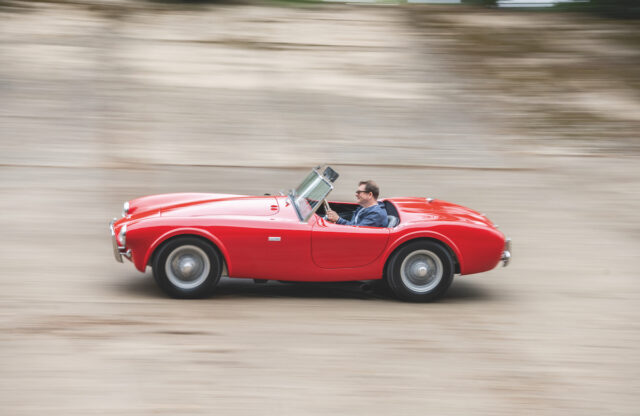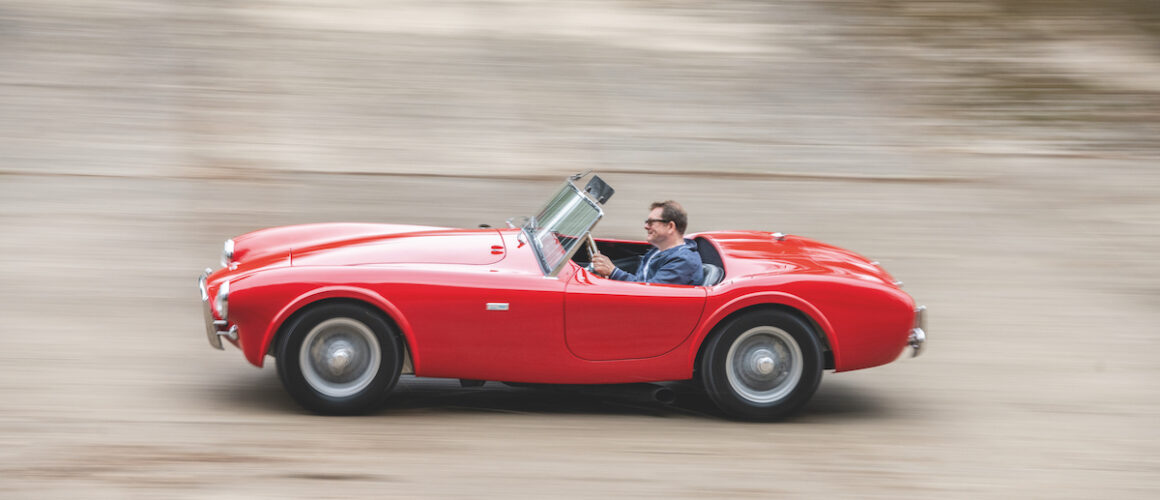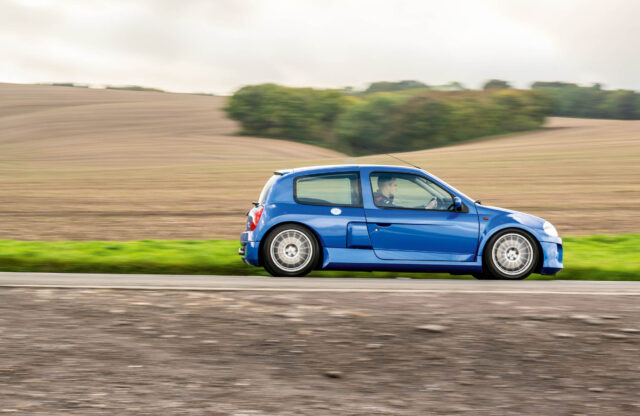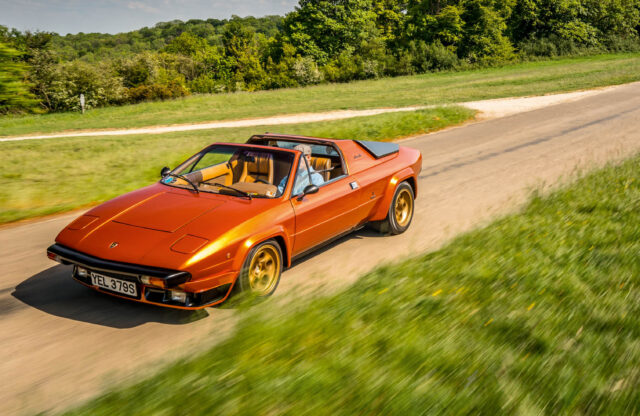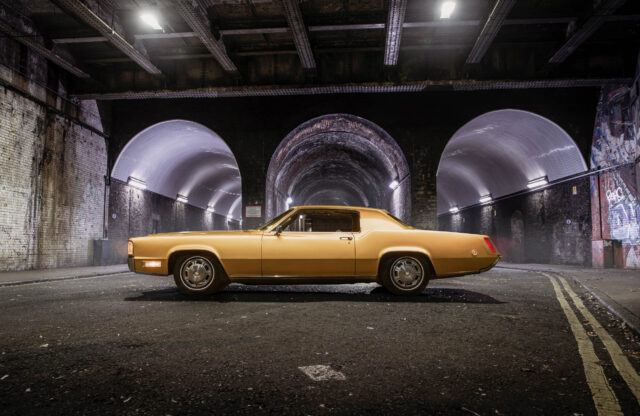The Mk1 Shelby Cobra combines understated barchetta looks with brawny V8 muscle, here’s how you sympathetically restore an unusually original survivor
This has to be the most evocative approach to any classic car showroom in the world. Once you’ve been buzzed through the main gates of Brooklands – the world’s first purpose-built banked motor racing circuit – you turn right, along the time-worn concrete that was once the last section of the Finishing Straight. And then, suddenly, you roll onto the bottom of the famous banking, which rises above you in Planet of the Apes-style dereliction. It’s been disused since 1939 and yet, as you turn right again towards your destination, it’s hard to resist an instinct to flinch against the oncoming spectres of pre-war racing cars, the thumping Bentleys, snarling Rileys and buzzing little Austins, that you sense might appear at any minute around the dramatically soaring curve.
Dismiss such foolish fancies, pass beneath the Members’ Bridge and then climb to the right along a muddy track through a wooded section of infield, turning back on yourself as you near the top. You’ve arrived at what used to be the Brooklands members’ restaurant, now home to classic car and AC specialist The Brooklands Motor Company.
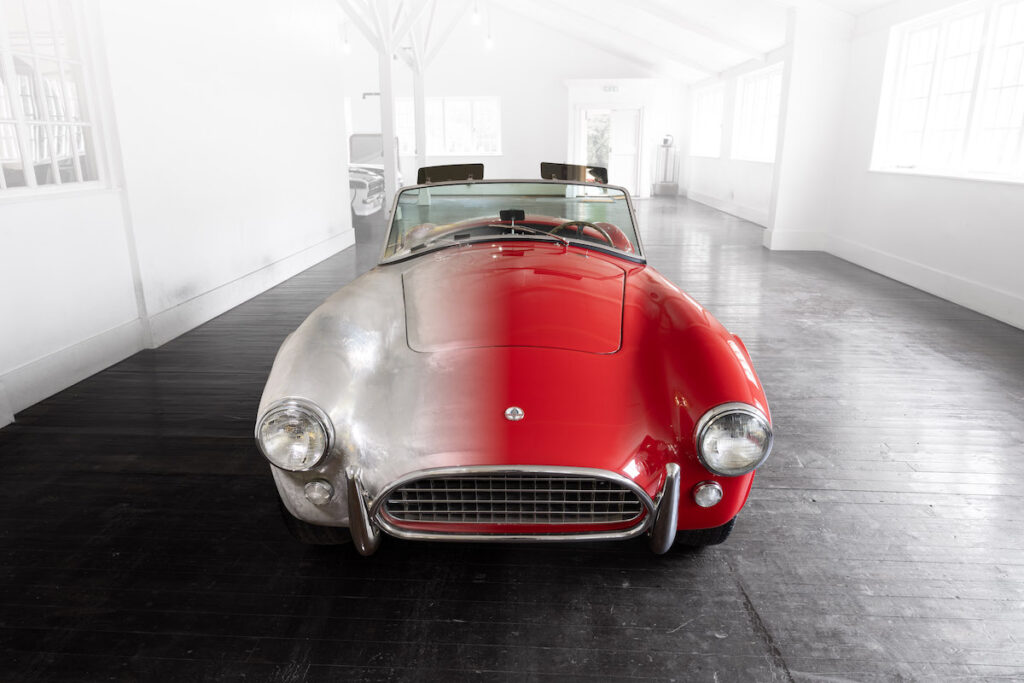
The Brooklands Motor Co is the temporary custodian of a 1963 Shelby Cobra Mk1, recently restored by them on behalf of owner John Kent. This isn’t a car with race history or a celebrity owner in its past; it is, however, that increasingly rare thing, a very original early Cobra, the purest expression of Carroll Shelby’s vision to slot a muscular Ford V8 into a handcrafted European sports car body and chassis.
Back in 2006, I had the idea of emailing Carroll Shelby to ask whether he’d consider joining Octane as a columnist. It’s often said of us Brits of a certain age that we can remember exactly what we were doing when Princess Diana died – well, I can recall how I was tinkering with one of the old cars in my workshop when the phone rang and I picked it up to hear that famous Texan drawl and the words, ‘Hey, Mark, it’s Carroll Shelby…’ Carroll would prove to be an excellent columnist for the next 2½ years and, of course, he talked about the Cobra along the way. So let’s hear his own words from Octane 40 of how the project began.
‘The chance to build something of my own came in 1961, when AC Cars of Thames Ditton lost their supplies of six-cylinder Bristol engines for their two-seater AC roadster. Ford in Detroit had just made a small-block V8… So I went to work and managed to get a chassis and body from Charles Hurlock at AC and one of those new little V8 engines from Dave Evans at Ford, and I put the two together at Dean Moon’s speed shop in California. I didn’t have any money, but it was a gamble I couldn’t pass up. Then one night I had a dream I’d call my car a Cobra.’
Shelby had already sent over a sample Ford V8 to AC’s works at Thames Ditton to try out in a modified Ace chassis. Reputedly, a puzzled storeman received the engine without any paperwork, and when he opened the crate he told AC boss Derek Hurlock (nephew of Charles) that he thought it might be Japanese – ‘It says FOMOCO on the side of it…’
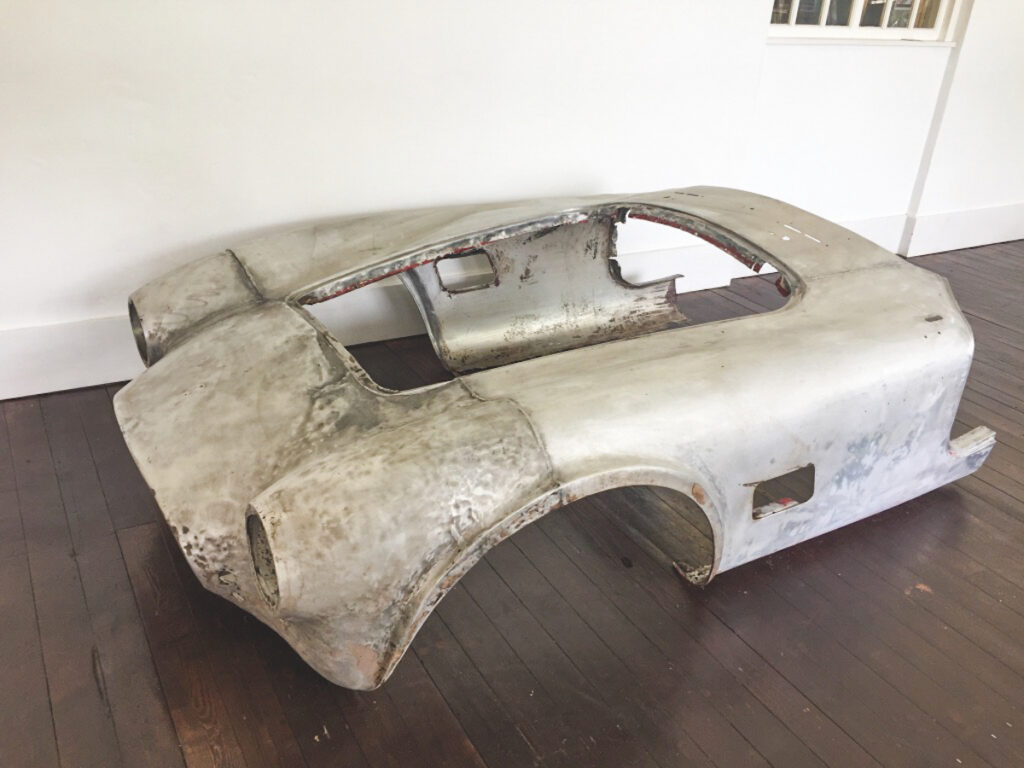
Production of AC Cobra chassis and bodies began at Thames Ditton in 1962, and John Kent’s car was ordered on 17 July.Its chassis number is CSX 2082 and it was one of the earliest cars to be fitted with the 289ci Ford V8 that superseded the 260ci V8 installed in the initial run of 75 Cobras. The chassis number would therefore suggest it’s the seventh 289 Cobra to be completed, although it’s not certain that the changeover from 260 to 289 engines happened quite so neatly over at Shelby American.
What is certain is that CSX 2082 was painted red with black interior and despatched to New York on 11 February 1963 via the SS American Farmer, minus engine and gearbox, which would be fitted by Shelby in the USA. Or, as AC’s record-keeper wrote in the despatch ledger, ‘Carol Shelby’. His first name was very much still a girl’s name in a Britain that had not quite yet started to swing.
Steve Gray is the proprietor of the Brooklands Motor Co, a company that has a long association with AC. ‘We work closely with the present-day AC Cars,’ says Steve, ‘whose owner, Alan Lubinsky, I’ve known for 25 years, ever since he took over in 1996 when Brian Angliss shut up the factory. We’ve been collaborating with Alan on a new electric AC but we very much major on the repair and restoration of the Thames Ditton and Brooklands-built cars, in our official capacity as AC Heritage.’
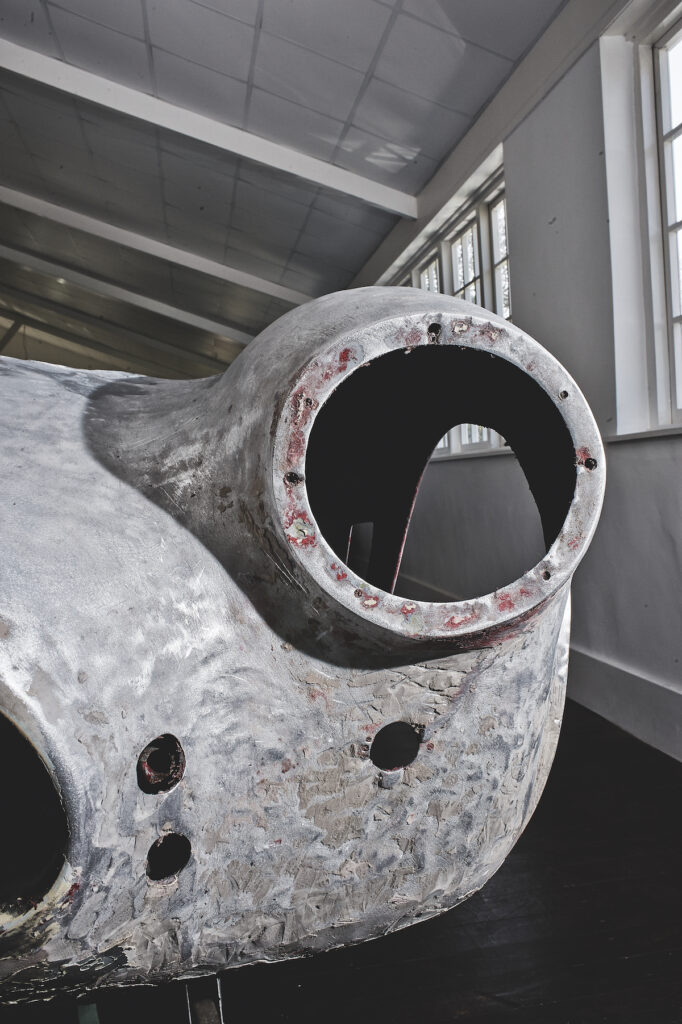
Brooklands Motor Co has AC’s original wooden body bucks for the Cobra – and they would be pressed into service once more for the restoration of CSX 2082. It’s fair to say that Steve and his expert crew have restored more Cobras than anyone else in the UK, and so he was the obvious choice when John Kent needed someone to check out this prospective purchase.
‘I’d always wanted a Cobra,’ John later tells me over the phone. ‘It’s on most people’s bucket list, isn’t it? I saw this one advertised at the RM Sotheby’s Battersea auction in September 2016 but didn’t go to the sale. It was knocked down to a bidder, but the deal fell through.
‘I was just about to go on holiday to Portugal at the time, and persuaded my wife that we should stop off and take a look at it on the way to the airport… Then, while waiting for our flight, I picked up a classic car magazine, saw Steve’s advert for Brooklands Motor Co and asked him if he could go and check it over while we were away. Steve reported back that he was very happy it was a genuine, original car,
so I did a deal with the auctioneers and bought it at slightly less than the hammer price.’
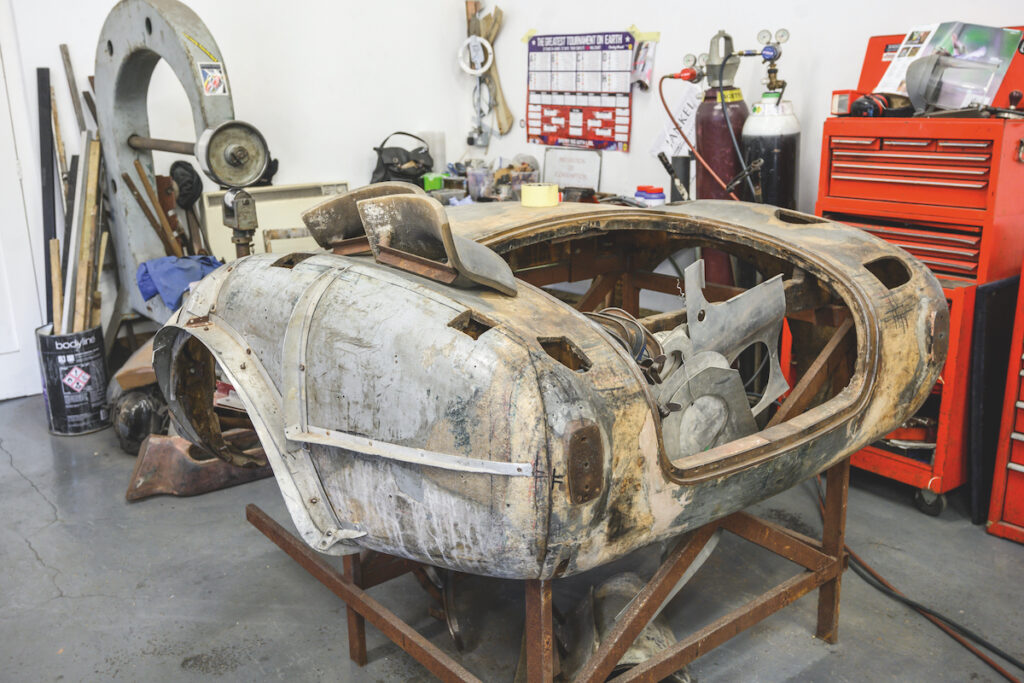
Steve Gray takes over the story. ‘Because the car had been repaired in the US at some point back in the day, there was initially some question about its overall integrity. Once we were able to put the car on a ramp, I spent an hour going over the underside with a torch. Right from the start, I could tell it was an original car because it still had the wooden wedges that AC used to lay the floorpan into the chassis. I phoned John and said “You need to buy this!”’
Key features of a Mk1 Cobra are its transverse leaf-spring suspension and worm-and-sector steering; the latter was changed to rack-and-pinion in early 1963, which also necessitated altering the shape of the front wishbones and their pick-up points. CSX 2082 retained the earlier type of wishbones and the steering box. But it was not all good news. While the car looked great to a casual observer, it had been crashed and repaired within the first few years of its life, and then re-repaired in the 1970s.
‘There was a phenomenal amount of crud in it,’ recalls Steve. ‘We’d put a gauge either side of a panel and you could feel half-an-inch of filler in places. But I told John not to worry because, underneath all that, the car was right.’
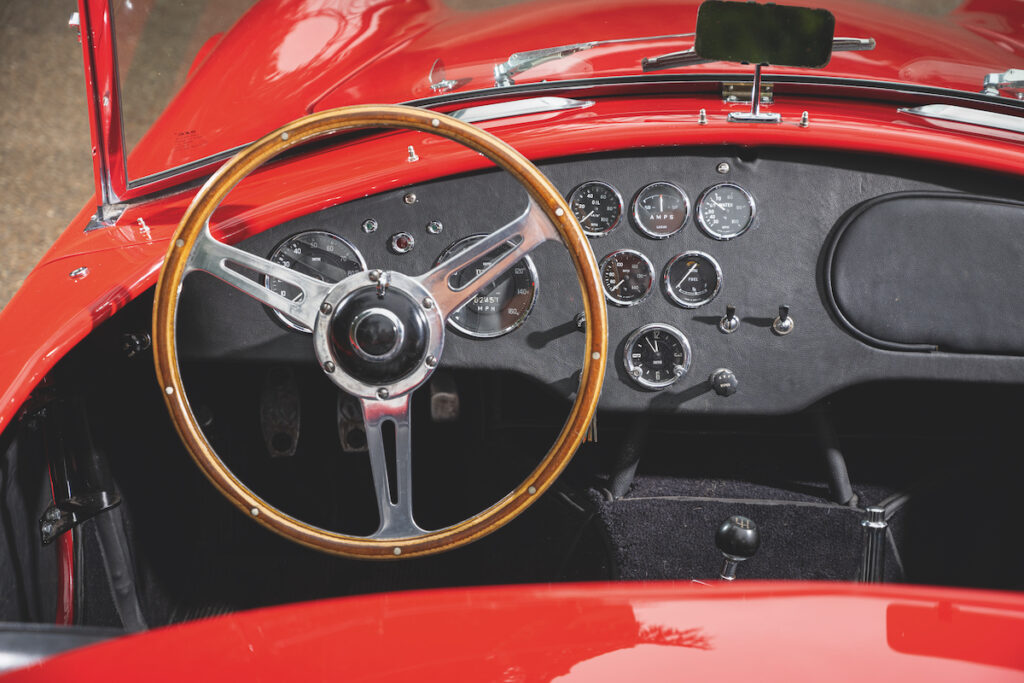
It may seem incredible to us in 2021 but, in the late ’60s and early ’70s, a Cobra was not a particularly valuable car. John Kent tracked down the American enthusiast who bought CSX 2082 in February 1974 and re-restored it, Tim Elfrink. ‘I am sorry to say it was not my best work,’ Tim told John. ‘The Cobras were not worth what they are today. The car had been damaged prior to me owning it; the previous owner and his brothers made the repairs and painted it with acrylic enamel. A year or so later I ended up selling the car to John Kaltenbach and he asked me to do a little work on it and repaint it. I think I’d paid about $7000 for the car and didn’t make very much on it.’
In fact, CSX 2082 had struggled to find a buyer even when it was brand new. Paperwork shows that after being invoiced by Shelby on 20 March 1963 to RRR Motors of Illinois for $5057, the car was returned unsold to Shelby a year later. On 16 April 1964, Shelby resold it to Ford dealer Ed Flandro in Pocatello, Idaho, for $5000, and it eventually found a customer in late 1964, about a year-and-a-half after it left England. That customer was Jim Weber, who ended up selling the Cobra to Tim Elfrink early in 1974.
Some aspects of the car’s early life remain cloudy, not helped by the fact that Ford did not stamp a serial number on its small-block V8s until the late 1960s. ‘The 289 V8 has a casting date code for 18 June 1964 and a stamped assembly code for 25 August 1964,’ explains John Kent, ‘and yet one would assume that it would have had a 1963 engine originally. Was the engine swapped before it was sold to Jim Weber – or did Tim Elfrink change it ten years later?’
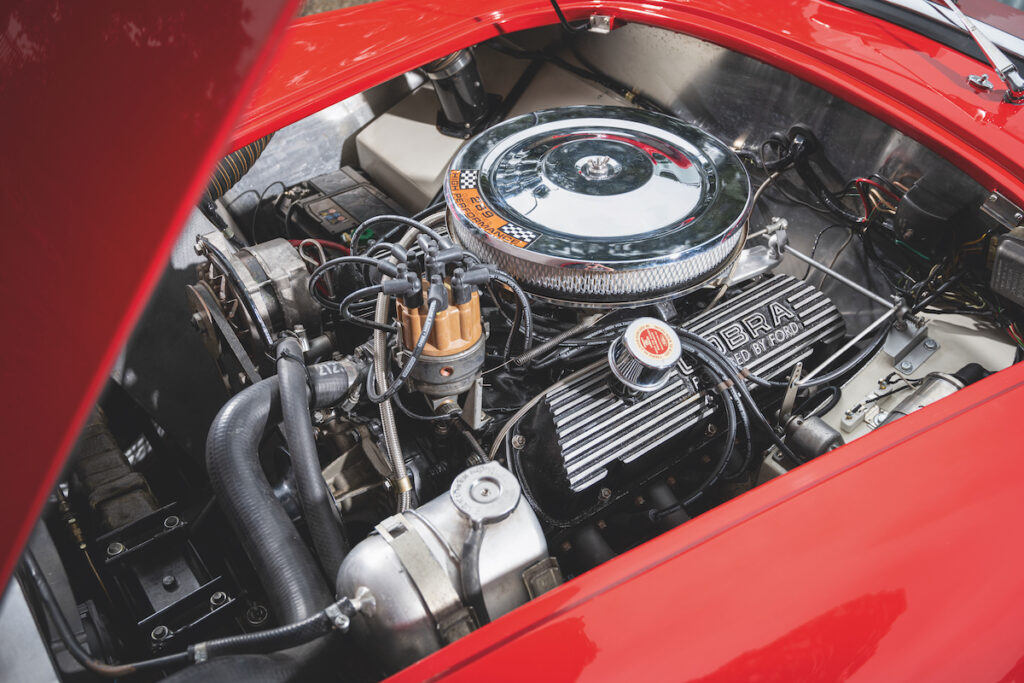
Tim’s recollections of CSX 2082 are understandably hazy, 47 years on, but he does recall that he robbed a number of parts from 2082 to help with the rebuild of another Cobra he owned, CSX 2543, which he fitted with a seriously hot engine. Did Tim swap over the V8s, so that 2082 ended up with the slightly later V8 from 2543?
Another mystery is when CSX 2082 acquired the wing vents and slightly wider flared ’arches that were features of the car when John acquired it in 2016. Not surprisingly, overheating could be a problem with Cobras and louvred vents were incorporated in the front wings after the first 160 or so cars had been made. The vents in John’s car, however, didn’t look original and were probably added later.
CSX 2082’s career after Tim Elfrink sold it in 1975 to John Kaltenbach is better documented. Kaltenbach kept the Cobra until 1988, when he part-exchanged it against a Ferrari Dino being offered by a dealer: at the time the Dino was valued at $90,000 and the Cobra at $60,000! The dealer then spent a further $30,000 on improving the Cobra before selling it in 1989 to a New York-based enthusiast, Marc S Sherman, for $165,000.
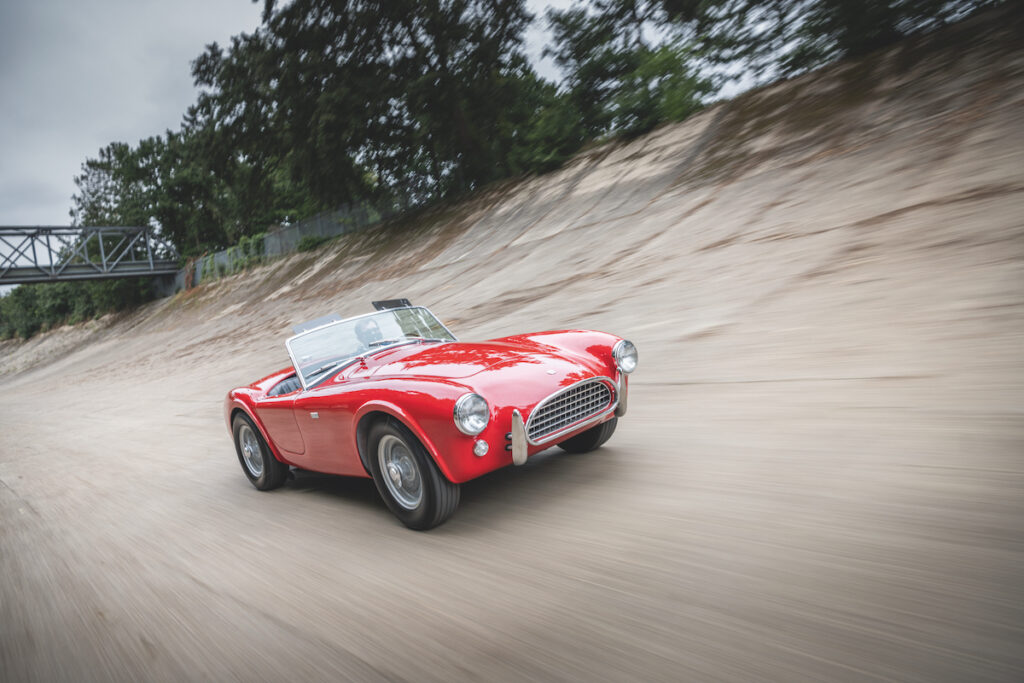
That was at the height of the late-80s classic car boom and when the car next changed hands, at RM Auctions’ Monterey sale in 1998, it fetched only $98,975. Five years later, it was resold for $167,400 to the UK classic car dealer Brian Classic, who passed it on to Lord Drayson. He kept it in France for a while, until putting it into the 2016 RM Sotheby’s auction, where it was knocked down at £459,200. John Kent bought it post-sale for slightly less than that – but not massively so. The car’s value, however, did mean that it made economic sense to have Brooklands Motor Co completely restore it.
‘Once we had stripped the body of paint, we separated it from the chassis and invited the honorary president of the AC Owners Club, Bertie Gilbart-Smith, and Cobra expert Nick Green to inspect it in the raw,’ continues Steve Gray. ‘They were able to check all the matching numbers stamped into the doors and so on, to confirm its originality.
‘We then moved into what I’d call a conservation phase, rather than one of restoration. The car had clearly suffered a major knock on the front right-hand side, and some minor pieces of chassis tubing had been replaced. You could see from marks on the inner panels that a “body dozer” had been used to straighten the shell, but we elected to leave those as traces of its history. Similarly, although the seats had clearly been retrimmed in the 1970s, we left those alone as well. They’ve been like that for most of the car’s life and their slight patination adds to its character.’
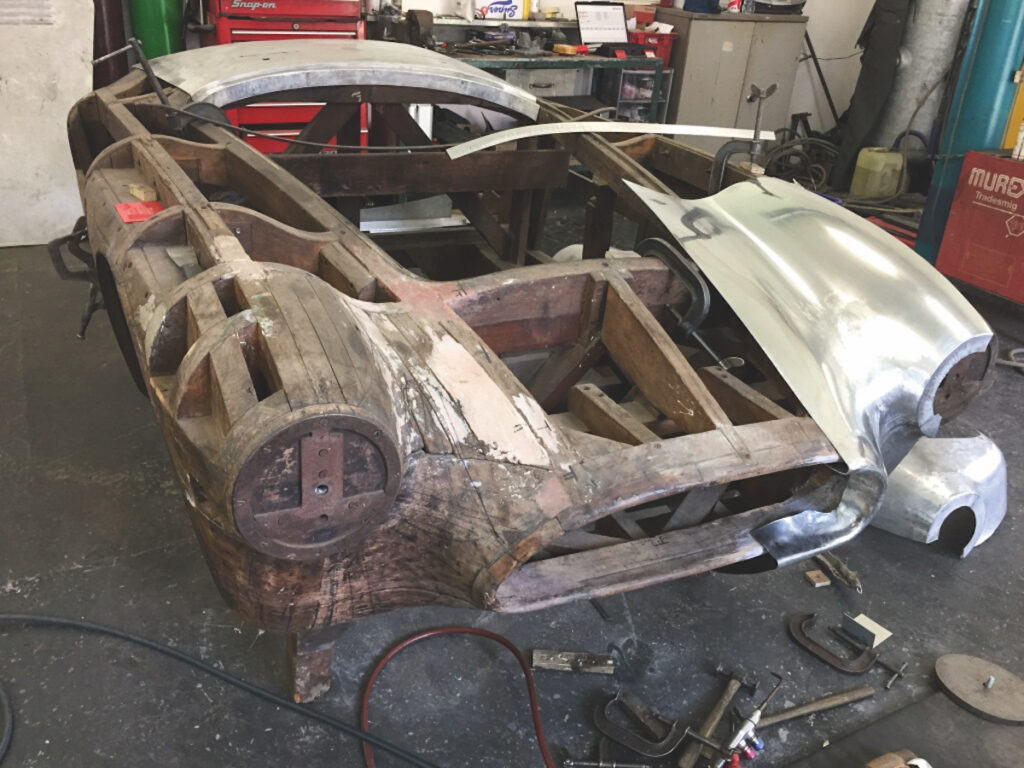
The Cobra’s aluminium body took a huge amount of work to refurbish, however. Brooklands’ ace (sorry…) panelman Roger Duke cut the damaged body into sections before reworking each one on the original wooden body bucks and then gas-welding them back together using 1mm strips of alloy. The front and rear clips were repaired and the panels rewrapped around their supporting tubular frames, using virtually all of the original metal. Repairing the body and chassis consumed hundreds of hours.
Fortunately, the small-block Ford V8 lived up to its legendary reliability and needed no work at all. Suspension and rear diff’ were rebuilt, as was the steering box, and a set of AC Greyhound-type 5.5J wire wheels found to replace the incorrect 6.5J chrome wires that the car was wearing when it arrived. ‘Later 289 Cobras had slightly wider wheels than the Mk1, and wheelarches that were flared a little more to accommodate them,’ explains Steve. ‘The earlier wheels had less offset, with the spokes closer to the outer rim.’
While CSX 2082 is now about as close to an ex-factory Mk1 as you could hope to find, one detail has yet to be resolved. ‘The steering wheel was a later, dished type as fitted to a Mk2,’ says Steve, ‘whereas it should be flat-faced. The one now on the car is at least approximately right in that it has the turn signal lever incorporated into the top of its boss, but I’m still looking for an original Mk1 wheel.’
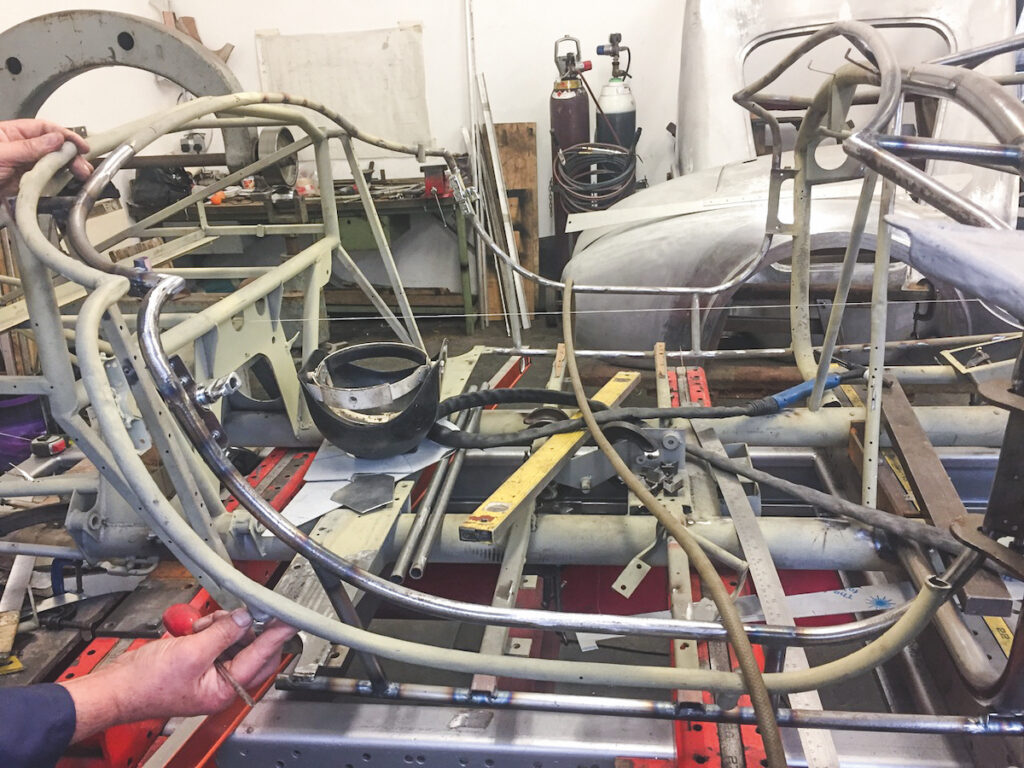
Correct or not, that three-spoke steering wheel dominates the Cobra’s snug cockpit. You slide behind it after fiddling for the inside catch that opens the featherweight driver’s door: in front of you is a simple dash peppered with traditional Smiths gauges; to your right (this being a left-hand-drive car, of course) a stubby chromed gearlever sprouts from a broad transmission tunnel, the lever’s lift-up crossbars for selecting reverse an instant giveaway to the gearbox’s transatlantic origins.
A couple of pumps on the accelerator to prime the four-barrel carb and the V8 blats into life, crackling through the side-pipes that exit behind each door. It’s thrilling but not obnoxiously loud, striking exactly the right note, both literally and metaphorically, for this iron fist in an alloy glove. The small-block Ford is one of the world’s truly great engines, and it’s just perfect for the Cobra.
Some drivers might sneer at the ‘unsophisticated’ transverse leaf springs that suspend the Cobra front and rear, but they work perfectly well on a road car – Chevrolet stuck with them on the Corvette right up until 2019, don’t forget. The light-gauge chassis tubes provided a degree of chassis flex that was integral to the car’s handling, too, an accepted practice pre-war if one that seems strange today. Denis Jenkinson famously quipped in 1964: ‘The next time I am out in a vintage car and the inevitable peasant comes up and says, “Ah, they don’t make ’em like that nowadays,’ I shall say, “Oh, yes they do, and they are called Cobras.”’
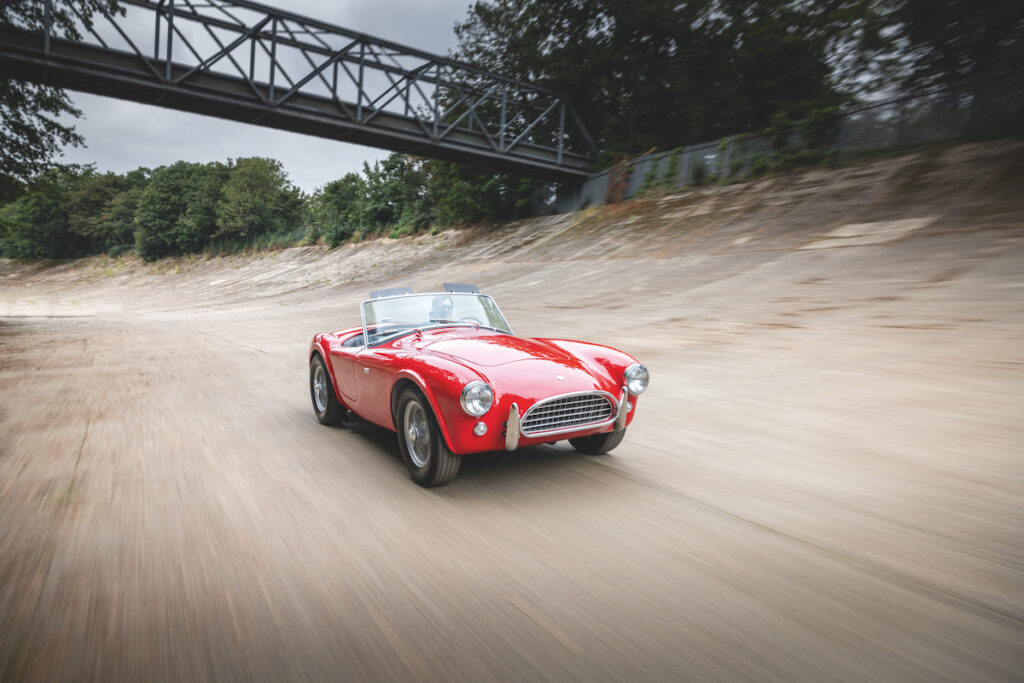
As more highly tuned engines, and bigger-capacity ones, were fitted for racing and for later road cars – the Mk3 427 – the limitations of the Cobra’s lightweight chassis became more apparent, even though the chassis tubes were beefed up and coil springs introduced when the Mk3 debuted in 1965. But drive it sensibly, even enthusiastically, and the Mk1 is not at all scary; yes, it will oversteer on demand, but it feels compact and catchable and, above all, fun.
Biggest surprise is the steering. Worm-and-sector must be inferior to the rack-and-pinion that superseded it in the Mk2, surely? Well, perhaps on a track, but on the roads and roundabouts surrounding Brooklands this car steers as beautifully as you could want, neither excessively heavy in tight corners nor remotely sloppy on the straights – a tribute to careful assembly by whoever rebuilt it.
There is nothing at all to dislike here, at least on a dry day with the top down. Few things in life can compare with the joy of accelerating briskly in a Cobra, revelling in the sound of the V8 braaaaarp-ing as you short-shift up through the gears, effortlessly surfing a wave of torque. The Mk1 Cobra has everything you need and nothing you don’t, and it manages to look simultaneously gorgeous yet understated. Original and best? I think so.
Factfile – 1962 AC Cobra Mk1
Engine 289ci (4736cc) Ford V8, OHV, four-barrel carburettor Power 271bhp @ 6000rpm Torque 312lb ft @ 3400rpm Transmission Four-speed Borg-Warner manual, rear-wheel drive Steering Worm and sector Suspension Front and rear: double wishbones, transverse leaf springs, telescopic dampers Brakes Discs all-round Weight 916kg Top speed 136mph 0-60mph 5.2sec
This article was originally published in Octane 214, August 2021
